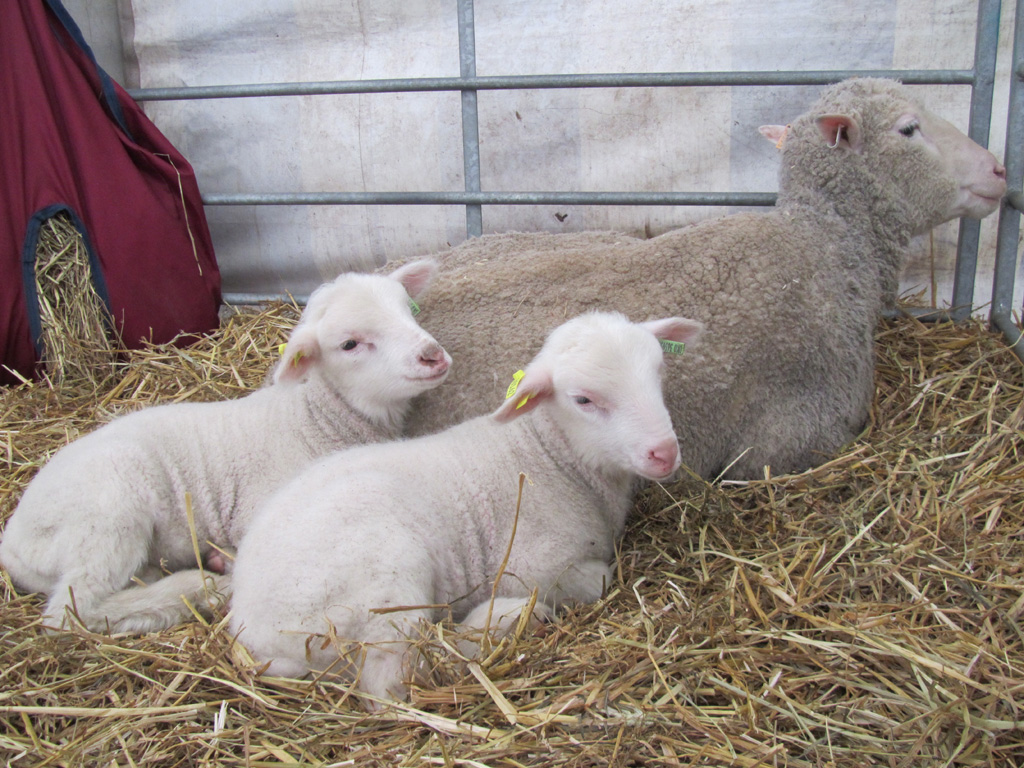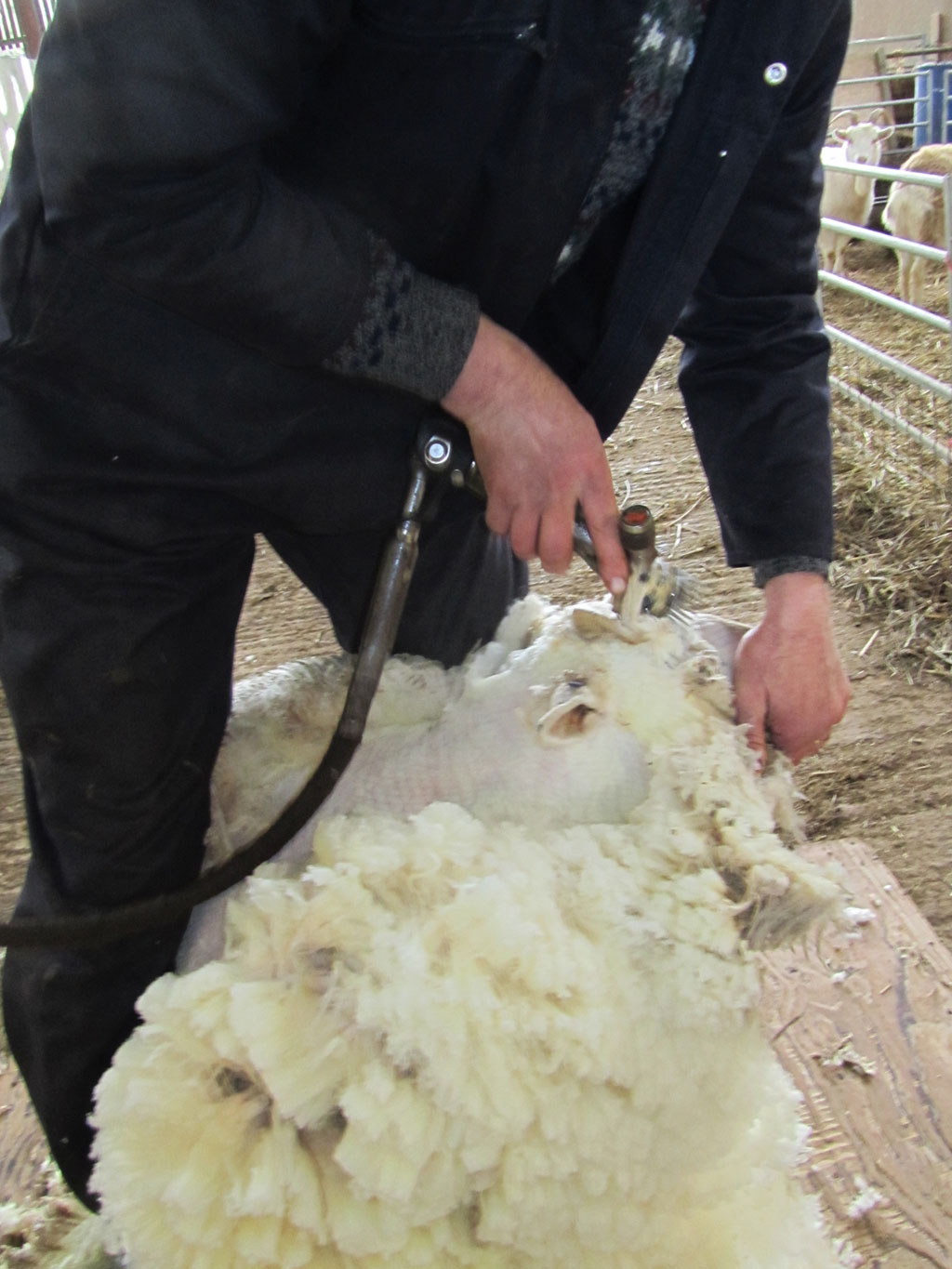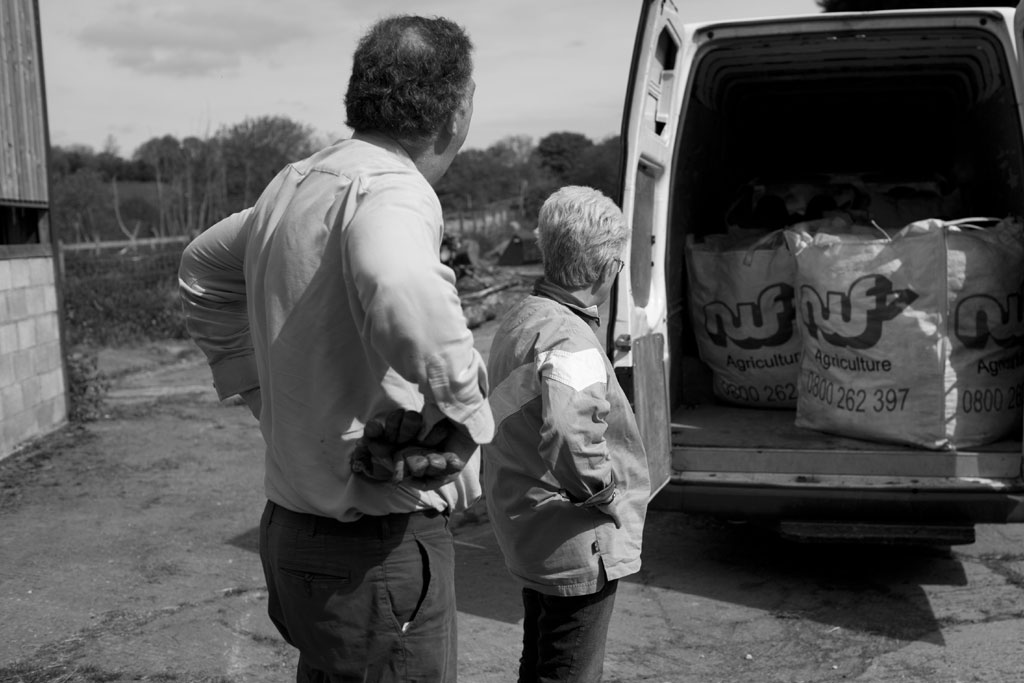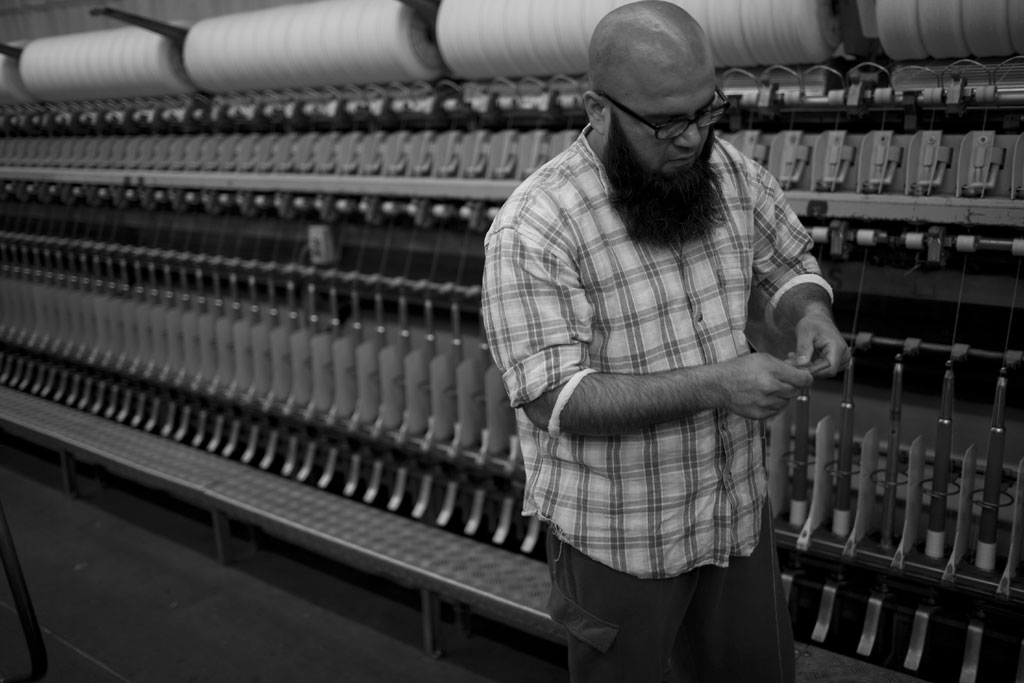Lesley Prior of Devon Fine Fibres has been with us throughout WOVEMBER. At the start of the month, she shared some stories on Growing Wool;
Then we learned from her about The Wool Harvest;
Of how, following the harvest, the wool is sent off for processing;
And how Gledhills spinning mill and Finisterre take this raw fibre and turn it into garments with a totally traceable supply chain.
Excitingly, this work has now culminated in a 100% British Bowmont Merino sweater which can be purchased and worn. It is a thing of joy! A warm, top quality, 100% Bowmont sweater, produced entirely within the UK, with an entirely traceable supply chain.
Well done Finisterre and Devon Fine Fibres.
Lesley’s blog today also reports some happy news for wool – The British Wool Marketing Board sold the biggest volume of the year so far yesterday – 2.5 million kilos of wool went through the auction halls yesterday at Bradford, 1 million of which were purchased by Curtis Wools. There is a full report here on the BWMB website. According to Lesley, Curtis Wools’ purchase ‘is the largest weight of British wool ever bought at auction by one merchant for their own use and represents a real vote of confidence in the future’. I know I am straying slightly off our house & gardens special here, but thought you’d forgive me on account of the exciting news both generally for WOOL, and specifically for Lesley and Finisterre. But now we return to the house & gardens special, to share a post Lesley wrote earlier this year about a very particular kind of household wool product; a duvet! Read on…
September 15, 2012
Just taken delivery of ANOTHER king size pure wool duvet, this time from The Real Shetland Company. This is entirely due to the fact that I’m on a mission to convert my wool-sceptic daughter into a passionate believer like myself. She’s coming to stay for a few days and will be sleeping under wool for the first time.
If my first impressions of this Shetland wool duvet are right then the poor girl doesn’t stand a chance of remaining anti or even neutral! It’s very well made, light and almost completely devoid of smell. I buried my face in it straight out of the packaging and categorically couldn’t smell anything remotely oily, woolly or sheepy. Just the smell of new cotton covering and a faint whiff of lavender – the company thoughtfully provide a little lavender sachet and a desiccant in the packing. But the lavender would NOT be sufficient to mask the pungent machine oil smell that some of the duvets have, so clearly this make has found a way around that problem. I know it wears off in a short time but to my mind it’s better not to have it at all.
So, the stage (or the bed!) is set and I wait to see what my daughter thinks. I’ll let you know how the experiment goes!
UPDATE – A Huge Hit! “Warm, light but still has more substance than man-made. Surprised that the filling stayed put. Was expecting wool to lump and clump in the cover.”
I think the expectation that the filling would move is based on the notion that a lot of people have – that wool duvets are somehow stuffed with handfuls of fleece just flopping about in a bag! They are in fact carded batts of wool, stitched into place. No movement possible.
So, round one to me in the conversion attempt. The skirmishing continues!
Doesn’t that just make you want a Shetland Wool Duvet? I don’t have a photo of a wool duvet to include here, but I think these posts Lesley wrote about how her Bowmont sheep fare in the snow are more than adequate reminders of the material properties of WOOL which make it just perfect for a duvet…
December 18, 2010
If ever you need proof of the thermal properties of a good wool coat then this photo should give it to you. No melting at all!
Many thanks to David Gray of Finisterre and Lesley Prior of Devon Fine Fibres for permission to reproduce their photos and words here! All Lesley’s words and photos of lambs, bowmont-shearing and snowy sheep © Lesley Prior and all black and white photos © David Gray







